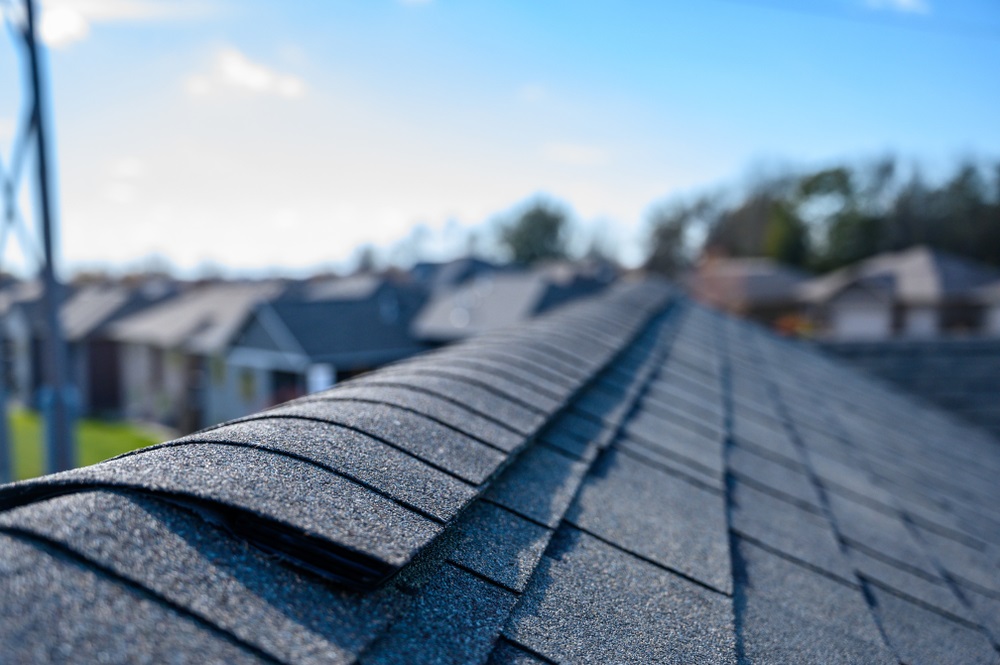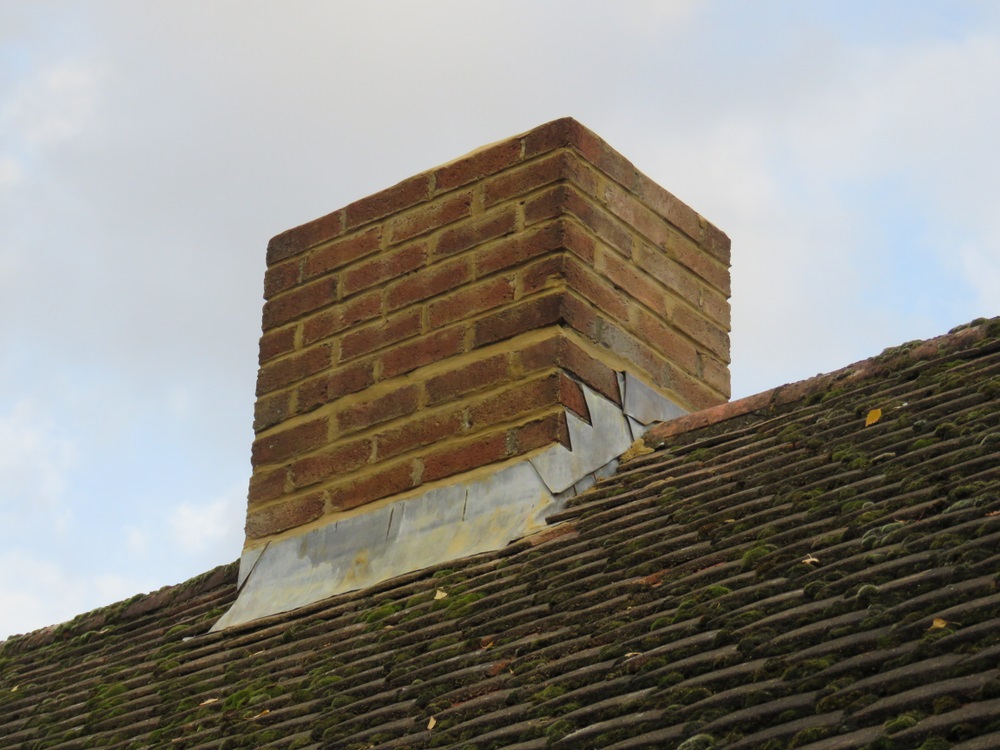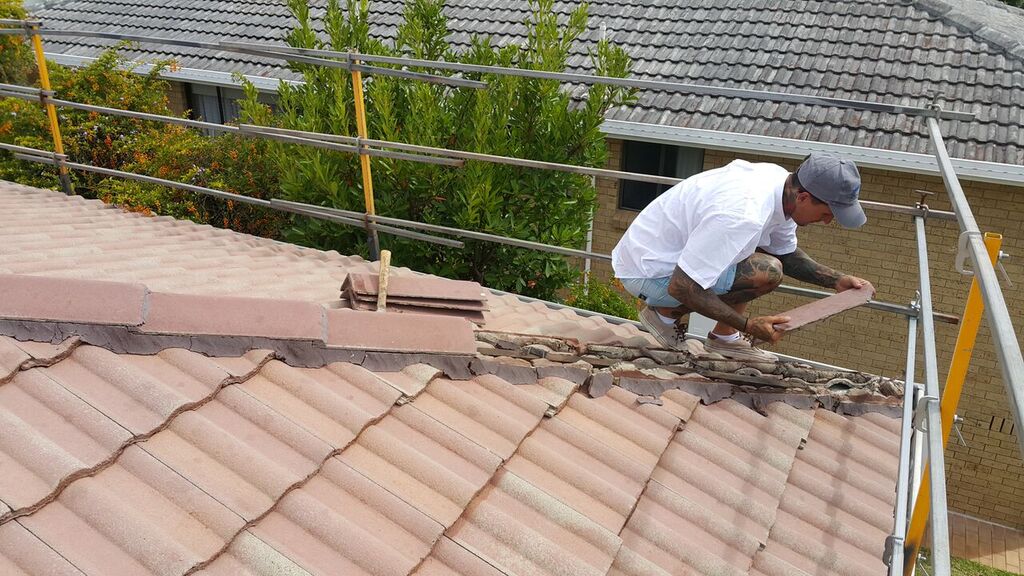Your roof is an essential component of your home, protecting you and your family from the elements. Over time exposure to harsh weather conditions can cause wear and tear, particularly in the mortar that holds your roof tiles together.
This is where roof re pointing comes in. In this article, we will explore what is roof pointing, why it is necessary to repoint roof, and how you can determine if your roof requires this important maintenance procedure.
What Is Roof Pointing?
Re pointing roof refers to the process of replacing or repairing the mortar between the tiles or slates on a roof. Mortar is a mixture of cement, sand, and water that is used to bind the roof tiles together and create a waterproof seal.
Over time, exposure to the elements causes the mortar to deteriorate, resulting in cracks, gaps, or even complete disintegration. Pointing roof involves removing the old, damaged mortar and replacing it with fresh mortar to ensure the structural integrity and weather resistance of the roof.
What Is Ridge Capping?

Ridge capping is a crucial component of the roof, especially in pitched roofs. Ridge capping refers to the cement or mortar that covers the ridge line of a roof where two slopes meet. It is the finishing touch that covers the ridge line.
Ridge capping tiles or slates are bedded in mortar and pointed to provide a watertight seal. Ridge capping serves as a protective barrier, preventing water penetration and keeping the underlying structure secure.
This is a critical area prone to damage, as it is exposed to the full force of the weather. Similar to the mortar between individual tiles, the mortar in ridge capping can degrade over time and require repointing a roof. Repointing the ridge capping is often included in the overall roof re pointing process.
Flexi point is a convenient product used for ridge pointing of the ridge caps of cement and terracotta roof tiles. Flexi point is a pre-mixed and pre-coloured compound that is trowel applied.
What Is Pointing Roof & Roof Bedding?
Pointing a roof and bedding are two essential processes involved in re pointing roof. While they are related, they serve different purposes and are carried out in distinct areas of the roof.
Pointing Roof
Roof tiles pointing refers to the application of mortar to the external face of the joint between the roof tiles. Repoint roof primary function is to seal any gaps or cracks in the mortar, providing a protective barrier against water penetration and improving the overall aesthetics of the roof.
Roof Bedding
Roof bedding, on the other hand, involves creating a strong base by applying mortar to the surface on which the roof tiles are laid. It is typically performed on ridge capping, which is the cement or mortar covering the ridge line of the roof where two slopes meet. The roof bedding process ensures stability and secures the tiles or slates in place.
What is the Difference Between Pointing a Roof & Roof Bedding?
Both roof tiles pointing, and roof bedding are crucial for maintaining the integrity and longevity of your roof. Roof tiles pointing protects against water damage and improves the visual appeal, while roof bedding provides a solid foundation for the roof tiles or slates, ensuring they stay securely in place.
It’s important to note that the specific techniques and materials used for roof tiles pointing and roof bedding may vary depending on the type of roof and local building practices. Hiring a professional roofing contractor will ensure that these processes are carried out correctly, maximizing the effectiveness and durability of your roof.
To better understand the difference between roof tiles pointing and roof bedding, let’s compare them in the following table:
| Pointing | Roof Bedding | |
| Purpose | Sealing gaps and cracks in mortar joints | Creating a strong base for tiles |
| Location | External face of mortar joints between tiles | Surface on which tiles are laid |
| Function | Protects against water penetration and enhances aesthetics | Provides stability and secures tiles |
| Materials | Mortar applied to the joints between tiles | Mortar applied to the surface for tile placement |
| Importance | Ensures water-tightness and improves the appearance of the roof | Enhances structural stability and prevents dislodgment |
Why Do You Need Repointing A Roof?

As mentioned earlier, exposure to the elements can cause the mortar in your roof to deteriorate. Cracked or eroded mortar joints can allow water to seep into your roof, leading to leaks, water damage, and even structural issues.
By undertaking regular roof re pointing, you can prevent these problems and extend the lifespan of your roof. It is recommended to have your roof inspected by a professional to determine if repointing a roof is necessary.
| Reasons for Repointing | Explanation |
| Weathering & deterioration | Mortar joints deteriorate due to weather exposure. repointing a roof maintains strength. |
| Water Leaks | Cracked mortar allows water penetration, causing leaks. repointing a roof prevents water damage. |
| Structural Stability | Deteriorated mortar compromises roof stability. Pointing a roof supports roof structural integrity. |
| Aesthetic Enhancement | Worn-out mortar decreases roof appearance. repointing a roof improves the overall look. |
| Longevity & Cost-Saving | Regular repointing a roof extends roof lifespan, avoiding costly repairs and premature replacement. |
How Do I Know If My Roof Needs Re-Pointing Or Re-Bedding?

Determining whether your roof requires roof re pointing or re-bedding can be done by inspecting the condition of your roof and identifying specific signs of deterioration. Here are the key points to consider:
- Cracked or crumbling mortar: Examine the mortar joints between the roof tiles. Look for cracks, gaps, or areas where the mortar is crumbling away. These indicate that roof tiles pointing is necessary.
- Loose or dislodged tiles or slates: If you notice any tiles or slates that are loose, shifted from their original position, or have become dislodged, it may be a result of deteriorating mortar. Pointing on roof or re-bedding is essential to secure them back in place.
- Water leaks: If you experience water leaks inside your home during rainstorms, it could be due to gaps or cracks in the mortar joints. Roof re pointing helps seal these openings and prevents further leakage.
- Visible wear and tear: Over time, the mortar can wear away, become discoloured, or develop a powdery texture. If you observe these signs on your roof, it indicates that your roof may benefit from roof re pointing to maintain its structural integrity.
It’s important to note that a professional roof inspection is recommended to assess the condition of your roof and determine the appropriate course of action. They have the expertise to identify any underlying issues and provide expert advice on whether roof re pointing or re-bedding is necessary.
To summarize the points mentioned above, here’s a table outlining the signs that indicate whether your roof needs roof re pointing or re-bedding:
| Signs | Re-Pointing Needed? | Re-Bedding Needed? |
| Cracked or crumbling mortar | Yes | No |
| Loose or dislodged tiles or slates | Yes | Yes |
| Water leaks | Yes | No |
| Visible wear and tear (discolouration, powdery texture) | Yes | No |
How Is Roof Repointing Done?
Roof tile repointing is a meticulous process that involves several steps to ensure a proper and long-lasting repair.
It’s worth noting that the specific techniques and materials used for roof re pointing can vary depending on factors such as the type of roof, the climate, and local building practices.
Here’s a detailed explanation of how roof re pointing is typically done:
- Assessing the extent of the damage and determining the best course of action:
A professional roofing contractor will inspect your roof to evaluate the condition of the mortar joints and identify any underlying issues. They will assess the extent of the damage and determine whether roof tile repointing or re-bedding is required.
- Removing the old mortar and preparing the surface for the new mortar:
The next step is to remove the old, damaged mortar. This is done using specialized tools like a chisel, grinder, or mortar rake. The goal is to carefully remove the deteriorated mortar from between the roof tiles without causing any damage to the surrounding materials. Once the old mortar is removed, the surface is thoroughly cleaned and cleared of any debris to provide a clean base for the new mortar.
- Mixing and applying the new mortar:
The new mortar is mixed according to the recommended ratios, usually combining sand, cement, and water. The mixture should have a consistency that allows it to be workable and easily applied. The mortar is then applied to the joints between the roof tiles using a pointing trowel or mortar gun. The mortar is pressed firmly into the gaps, ensuring a secure bond, and filling spaces.
- Finishing and smoothing the new mortar:
After applying the new mortar, the excess is removed using a pointing trowel or brush. This step helps achieve a neat appearance. The surface of the fresh mortar is then smoothed to match the existing profile of the roof. This can be done using a specialized tool called a jointing iron. Smoothing the mortar not only enhances the aesthetics but also improves its resistance to water penetration.
Benefits Of Roof Repointing
Roof re pointing offers several benefits:
- Improved Waterproofing: Replacing damaged mortar joints helps maintain the water resistance of your roof, preventing leaks and water damage to your home’s interior.
- Enhanced Structural Integrity: By strengthening the connections between the tiles or slates, roof re pointing ensures that your roof remains stable and can withstand adverse weather conditions.
- Prolonged Roof Lifespan: Regular repointing a roof can significantly extend the lifespan of your roof, saving you money in the long run by avoiding costly repairs or premature replacement.
- Aesthetic Appeal: Freshly re-pointed mortar can rejuvenate the appearance of your roof, giving it a cleaner, more polished look.
How Much Does It Cost to Repoint Roof?
The cost of roof re pointing can vary depending on various factors, including:
- Size & Pitch Of The Roof: Larger roofs with steeper pitches require more materials and labour, leading to higher costs of roof tile repointing.
- The Extent Of The Damage: The severity of the mortar deterioration and the number of joints requiring repair will impact the overall cost of pointing on roof.
- Type Of Material Used For The New Mortar: Different mortar mixes and materials can vary in cost, with premium options generally being more expensive.
- Professional Labour Costs: Hiring a reputable roofing contractor will ensure a high-quality job but may come at a higher price.
Invest in Your Roof’s Future
Re pointing roof is a vital maintenance task that can protect your home from water damage, extend the lifespan of your roof, and enhance its overall appearance.
By recognizing the signs of deteriorating mortar and seeking professional advice, you can determine if roof tile repointing or roof bedding is necessary.
Investing in regular roof maintenance, including repointing a roof, is a wise decision that will safeguard your home and provide you with peace of mind for years to come.
Say Goodbye to Leaks || Roof Longevity Guaranteed
Contact a professional roofing contractor today!
Schedule an inspection and ensure the longevity of your roof.
FAQs
1. What do you use to point a roof?
For roof pointing, cement mortar is typically used. However, flexible pointing chemicals have started to be used recently. These adjustable pointing materials have the advantage of expanding and contracting with the weather.
2. Do roof tiles need pointing?
Roof tiles pointing is crucial because over time the roof bedding erodes and breaks. The mortar that surrounds the roof tiles and rests on top of the roof bedding is called pointing. It keeps the tiles firmly in place and fills up any gaps or cracks between them.
3. What is roof rebedding?
Rebedding is the act of removing the old cement mortar from beneath the ridge tiles, fixing the linked ridge caps to hold the roof tiles in place, and then repainting the ridge tiles. This is necessary when the mortar is damaged or severely cracked.
4. How often should a roof be repointed?
Repointing your roof about every 10 to 15 years is advised. You should keep an eye out for a few signs that might mean your roof needs repointing sooner rather than later.
5. Why are roofs pointed?
Pitch roofs are made to stand up to wind, rain, snow, and ice. They are sturdy, and solid, and guarantee ideal water drainage because of their triangle shape.

